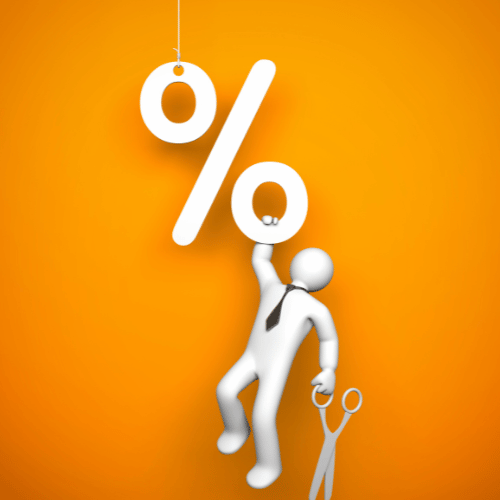Stop Slips, Trips and Falls in the Kitchen

Trips and Falls in the Kitchen can be mitigated. Slip, trip and fall accidents are the most common cause of major injury in the workplace. Those who work in kitchens are at particular risk of having an injury due to the kitchen environment being one of the most hazardous places in which a person can work.
The cost of slip, trip and fall accidents to UK businesses is huge, being estimated at £1bn per annum*, through costs such as compensation claims and lost work hours through absenteeism.
Employers have a duty of care and must provide a safe place for their staff to work in. They must take steps to prevent slip, trip and fall accidents as much as possible.
*Source: Health and Safety Executive
The Problem:
Work in kitchens usually happens at a fast pace. Orders need to be fulfilled on time, food needs to be served hot and so things can quickly become stressful. Accidents are more likely when people are rushing around.
Floors can easily become wet, oily, and greasy, spillages may occur frequently and debris may often be lying around.
On top of this there are likely to be hot liquids and oils, burning appliances as well as dangerously sharp utensils and machinery.
These factors alone, or a combination, result in an increased likelihood of slips, trips and falls in kitchens. These factors also mean, when an accident does happen in the kitchen, it is more likely to result in a serious injury when compared to other places of work as our video below demonstrates.
The solution:
The good news is that just by putting simple measures in place, you can reduce the risk of slip, trip and fall accidents in the kitchen considerably. Consider the putting the following things in place:
- A regular cleaning programme:
Poor housekeeping is the reason for the majority of trips. Having a regular cleaning routine will reduce the amount of food debris and misplaced utensils lying around on floors. Liquids, grease and oil will also be regularly removed. An effective and efficient cleaning routine will reduce many of the hazards associated with slips, trips and falls.
- Forward planning:
Understand when your busiest periods are and ensure you put the right number of staff in place to cope with these periods. By doing so, you will help alleviate the stress and much of the rushing around amongst your kitchen staff, which will, in turn, reduce the likelihood of accidents.
- Non-slip flooring and nonslip safety matting:
Traction is critical in kitchens where there is a very real problem of oil, grease and regular spillage. Most slips occur on wet floors, or floors contaminated with debris from food or oil. A good non slip floor is essential for reducing slips in kitchens.
Non slip matting can be placed in areas of high risk, such as where cooking, washing and preparations take place. Use a mat with flow through holes which will allow the debris or liquid to flow away from the standing surface. Kitchen mats should be made of nitrile rubber, which will not break down due to grease. Remember non slip flooring and non slip mats will only remain effective if they too are regularly cleaned.

- Use the right equipment and keep it well maintained
Use pans with lids and use containers with covers to stop splashes and spillages. Equipment needs to be maintained regularly to prevent it from becoming faulty and leading to leakages of oils and liquids which can cause to a slip hazard. Good extraction equipment will reduce the accumulation of liquid and grease before it is deposited elsewhere, such as on the floors.
Preventing Slips in the Kitchen: Ensuring Safety and Reducing Risks
The kitchen is often the heart of the home, a place where meals are prepared, and families gather. However, it can also be a hazardous area, particularly when it comes to trips and falls in the kitchen. These accidents can lead to serious injuries, making it essential to implement preventive measures to ensure safety. In this blog, we will explore effective strategies to prevent slips and falls in the kitchen, creating a safer environment for everyone.
Understanding the Risks
Trips and falls in the kitchen are common due to various factors, including wet floors, clutter, and improper footwear. Kitchens are prone to spills from cooking, washing dishes, and other activities, which can create slippery surfaces. Additionally, the presence of appliances, utensils, and other items can contribute to tripping hazards. Understanding these risks is the first step in preventing accidents.
Implementing Good Housekeeping Practices
Good housekeeping is crucial in preventing trips and falls in the kitchen. Here are some essential practices to maintain a clean and safe kitchen environment:
-
Routine Cleaning: Establish a regular cleaning schedule to keep floors free from dirt, grease, and spills. Clean up any spills immediately to prevent them from becoming slip hazards. Use appropriate cleaning products to ensure that the floor is thoroughly cleaned and dried.
-
Declutter: Keep the kitchen organized and free from clutter. Store utensils, appliances, and other items in designated areas to prevent them from becoming tripping hazards. Ensure that pathways are clear and that there is ample space to move around safely.
-
Proper Waste Disposal: Dispose of waste promptly and ensure that trash bins are not overflowing. Spilled or scattered waste can create slippery surfaces and increase the risk of accidents.
Using the Right Equipment
Investing in the right equipment can significantly reduce the risk of trips and falls in the kitchen. Consider the following:
-
Non-Slip Mats: Place non-slip mats in high-risk areas, such as near the sink, stove, and refrigerator. These mats provide a stable surface and help to absorb moisture, reducing the risk of slips.
-
Wet Pick-Up Vacuum Cleaner: Instead of using a mop, which can leave floors damp and slippery, use a wet pick-up vacuum cleaner. This equipment is more efficient and effective at removing water and leaving the floor completely dry.
-
Proper Footwear: Encourage the use of non-slip shoes in the kitchen. Proper footwear provides better traction and reduces the risk of slipping on wet or greasy surfaces.
Training and Awareness
Educating kitchen staff or family members about the risks and prevention of trips and falls in the kitchen is essential. Training should cover the following topics:
-
Importance of Immediate Spill Cleanup: Emphasize the need to clean up spills as soon as they occur. Use appropriate tools and products to ensure that the area is thoroughly cleaned and dried.
-
Reporting Hazards: Encourage individuals to report any hazards, such as wet floors, clutter, or equipment defects. Prompt reporting allows for quick action to address the issue and prevent accidents.
-
Use of Safety Signage: Train staff to use safety signage and barriers to cordon off wet areas. This helps to alert others to potential hazards and prevent accidents.
Additional Preventive Measures
In addition to good housekeeping and training, consider implementing the following measures to prevent trips and falls in the kitchen:
-
Adequate Lighting: Ensure that the kitchen is well-lit to improve visibility and reduce the risk of tripping over objects or slipping on wet surfaces.
-
Regular Inspections: Conduct regular inspections of the kitchen to identify and address potential hazards. Check for loose tiles, uneven flooring, and other issues that could contribute to accidents.
-
Floor Treatments: Apply anti-slip treatments or coatings to floors to enhance traction. These treatments can be particularly effective in areas prone to becoming wet, such as near sinks and dishwashers.
Conclusion
Preventing trips and falls in the kitchen requires a combination of good housekeeping practices, the right equipment, and proper training. By maintaining a clean and organized kitchen, using non-slip mats and appropriate footwear, and educating individuals about safety measures, you can create a safer environment for everyone. The investment in these preventive measures is minimal compared to the potential costs of accidents. Prioritizing safety in the kitchen not only protects individuals but also enhances productivity and peace of mind. Implement these strategies today to reduce the risk of slips and falls and ensure a safe and efficient kitchen.
What to do next?
We have a comprehensive guide on how to prevent slips, trips and falls in the workplace which we will happily share with you, just ask. Mats are a simple and relatively inexpensive solution to the majority of slips, trips and falls. If you wish to know more about choosing the right mats to put into your establishment, then visit the non slip mats section on our Mats4U website. Alternatively, pick up the phone and call us on 0121 313 6748 or email us at sales@mats4u.co.uk
To stay up to date with new products and information please follow us on Linkedin









